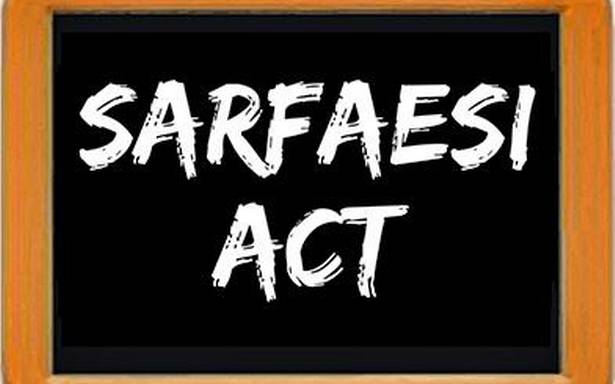Introduction
Section 14 of the SARFAESI Act, 2002 states the power of the Chief Metropolitan Magistrate (CMM) and District Magistrate (DM) to assist secured creditor in taking possession of secured assets. According to section 14 of the Act when the secured creditor takes possession of the secured asset or wants to sell or transfer any secured assets as per the provisions of the SARFAESI Act, 2002, in such a case the secured creditor will give in writing to Chief Metropolitan Magistrate or District Magistrate, in whose jurisdiction the secured asset is situated, for the abovementioned purpose. In that case, the Chief Metropolitan Magistrate or the District Magistrate may either themselves upon such request take possession of such assets or any document relating to it or may authorize the same to a subordinate officer known as the ‘receiver’. Further, forward such documents or assets to the secured creditor. Moreover, the Chief Metropolitan Magistrate or District Magistrate may take or cause to take such a step or use force that in their opinion deems necessary for compliance of provision under this Act. Furthermore, such an act done by the Chief Metropolitan Magistrate or District Magistrate in pursuance of this section will never be called in question in any court or before any authority.
Interpretation By The Court:-
Chief Judicial Magistrate:-
The Supreme Court held in The Authorized Officer, Indian Bank vs D. Visalakshi and Ors.[2019 (9) SCJ 535], held that in the case of the non-metropolitan area a Chief Judicial Magistrate is equally competent to deal with an application moved by the secured creditor under Section 14 of SARFAESI Furthermore, the view was taken by the High Courts of Kerala, Karnataka, Allahabad, and Andhra Pradesh was upheld and decisions of the High Courts of Bombay, Calcutta, Madras, Madhya Pradesh and Uttarakhand in that regard were reversed.
RECEIVER:–
The term ‘receiver’ has not been defined under SARFAESI Act 2002, but according to T. Krishnaswamy Chetty vs C. Thangavelu Chetty And Ors. (AIR 1955 Mad 430) Kerr has defined the term ‘receiver’ as:
“A receiver in an action is an impartial person appointed by the Court to collect and receive, pending the proceedings, the rents, issues and profits of land, or personal estate, which it does not seem reasonable to the Court that cither party should collect or receive, or for enabling the same to be distributed among the persons entitled”.
In Rahul Chaudhary v. Andhra Bank & Ors.( MANU/DE/0404/2020) Delhi High Court held that “since the provision vests discretion in the District District Magistrate/CMM and as long as the discretion is exercised with due care and caution, the appointment of advocates as receivers cannot be faulted”. Due to the overburden work on DM and CMM, they can appoint advocates as a ‘Receiver’ to take possession of the secured assets and it is not contrary to section 14 of the Act.
Sale of Secured Assets:–
As it is mentioned under section 14 of the Act, that the secured creditor has to make written request to District Magistrate or Chief Metropolitan Magistrate, if they want to take possession or transfer or sell the secured asset. An issue was raised in Union Bank of India & Anr. Vs. State of West Bengal & Ors. [(2017)144SCL351(Cal)] “whether a secured creditor is entitled to invoke the provisions of Section 14 of the Act of 2002 subsequent to the sale of an immovable property over which it claims security interest?”
The Kolkata High Court held that “after sale, the secured creditor can no longer claim a security interest over such immovable property as such security interest stands dissolved by the issuance of the sale certificate. On the execution and registration of the deed of conveyance, the title to the immovable property stands transferred to and vested with the purchaser. There remains nothing more to be done by the secured creditor in respect of such immovable property. The secured creditor does not retain any right, title or interest over and in respect of the immovable property sold under the Act of 2002 or otherwise”.
Power of District Magistrate and Chief Metropolitan Magistrate:-
As mention under section 13 of the Act that the secured creditor can take possession of the secured asset on the default of the borrower, but what if the defaulting party does not allow the secured creditor to take possession or transfer the secured asset. In such a case the secured creditor cannot use force to exercise his power, but there is a remedy under section 14 under which the secured creditor can approach the court to get possession, as Section 14 of the Act gives power to DM and CMM to take or cause to take any step or use force as it deems necessary in their opinion for the compliance of section 14(1) of the Act.
Conclusion:-
Section 14 of the Act is about the role and authority given to District Magistrate and Chief Metropolitan Magistrate, to assist the secured creditor in taking possession or selling the secured asset. There are many new interpretations made by the Hon’ble judges of different courts that have emerged from various judgments about SARFAESI Act, for instance, under section 14 of the Act, Chief Judicial Magistrate can also entertain cases under section 14 of the SARFAESI Act 2002 in non-metropolitan areas, the advocate can be a receiver, the secured creditor cannot claim security interest once the secured asset has been sold to another, etc.
Article By:- Pooja Gupta





